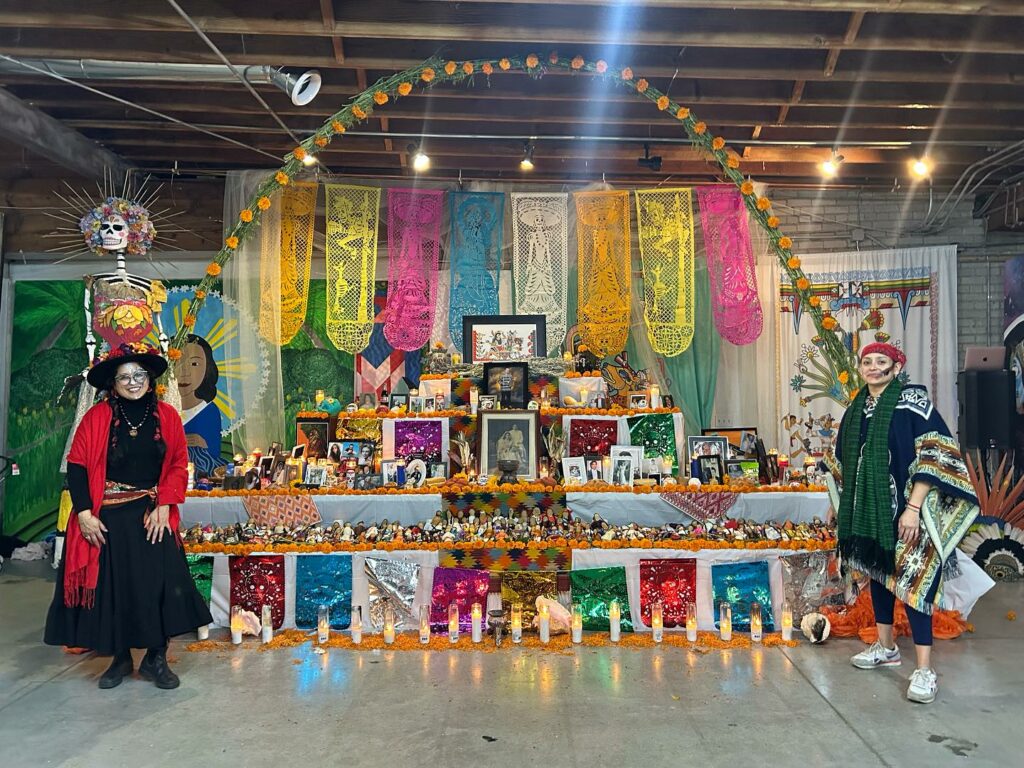Indigenous Roots
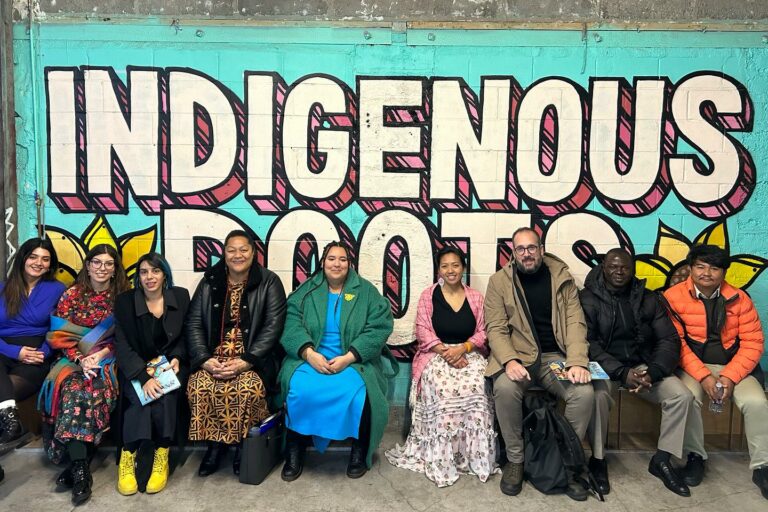
Our strength as leaders, and as an organization, is seeing, understanding, and recognizing every single human person–everyone–has something to offer,” Mary Anne Quiroz said. “We always have something to give and receive. The reciprocal relationship is there. We don’t have any expectations – we see ourselves as a launching pad.”
Mary Anne Ligeralde Quiroz and her life partner and duality Sergio Cenoch are the co-founders and co-directors of Indigenous Roots, an organization on the East Side of St. Paul that provides accessible space and programming to promote and practice holistic well-being through indigenous arts, culture, and tradition. The couple are also co-founders and co-directors of Kalpulli Yaocenoxtli, a traditional Mexican/Nahua/Aztec dance and community group that they founded in 2006.
Mary Anne believes that arts and culture is an ecosystem for community development; this belief is apparent in all the work she and Sergio do for their community.
Planting Seeds
Mary Anne describes the history of Indigenous Roots as the result of many years of organizing and relationship building in the neighborhood where she and Sergio Cenoch
grew up. For the 15 years prior to the organization’s creation in 2015, Mary Anne organized and fundraised for groups without getting paid.
“As I grew and developed as an organizer, the women in my life told me I could do this professionally,” Mary Anne said. “I’m grateful to them; now at Indigenous Roots I feel like I’m helping to raise a neighborhood that raised me.”
Throughout high school, becoming young parents, and into college, Mary Anne & Sergio centered art and ancestral knowledge as they created space for communities to gather and form.
“In 2010, the idea for Indigenous Roots started to form, but we didn’t even know to call it that,” Mary Anne said.
The pair had already started their dance group and knew that there was more to be done for their neighborhood.
“I didn’t wake up one day thinking I needed to start another nonprofit, but I did know we were doing what we loved to do, and we needed to create more space,” Mary Anne said. They became a nonprofit in 2015 so they could accept donations. In 2016, they continued to organize events, host cultural ceremonies, and champion the arts. They even brought a large group of youth and their families, by invitation, to Standing Rock to protest the Dakota Access Pipeline. Many of the youth later became water protectors in Minnesota and globally, a nod to how the organization values creating culture bearers for the future. In 2018, with the help of Land Bank Twin Cities, Inc., they were able to purchase and open an arts center.
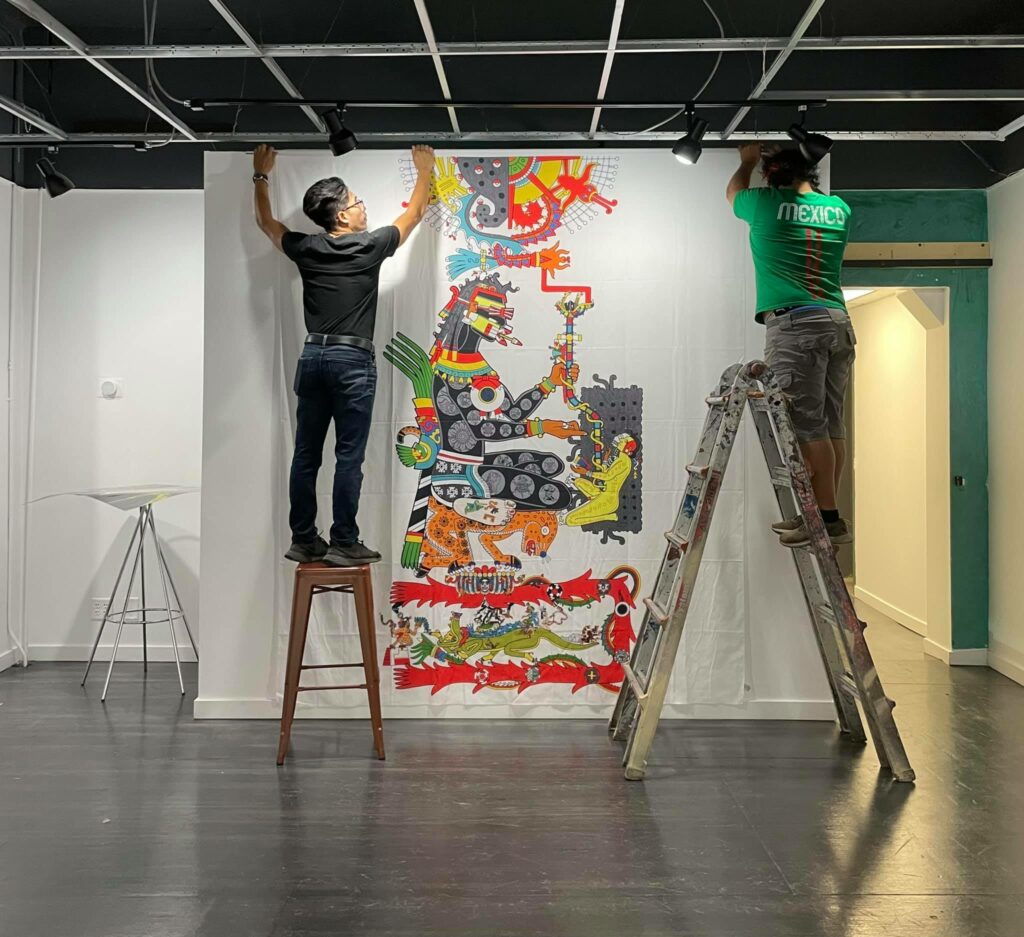
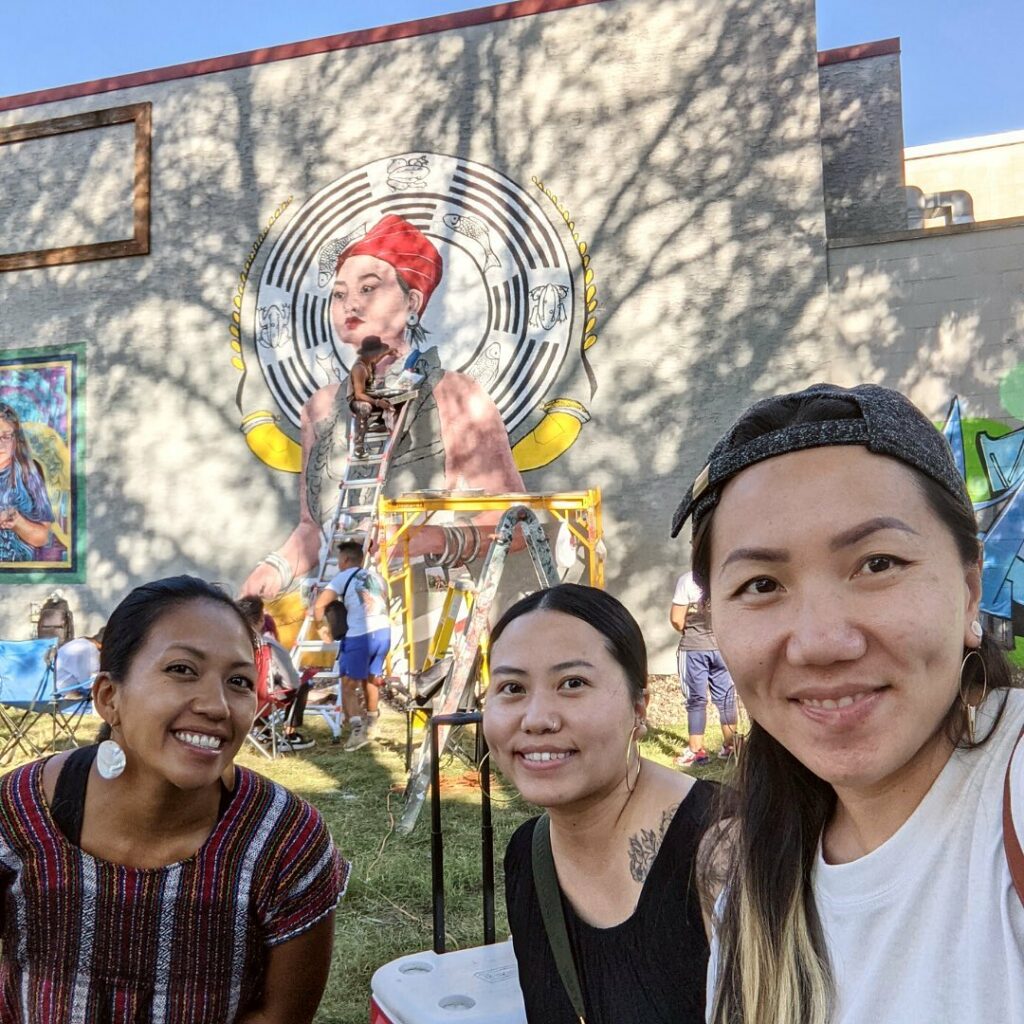
Taking Root
In May of 2017, the Indigenous Roots Cultural Arts Center opened as an incubator space for artists, cultural groups and organizations dedicated to building, supporting and cultivating opportunities for Native, Black, Brown and Indigenous peoples.
They didn’t have any grant funding yet, but the community raised three months of rent. Grant funding came soon after, and eventually they were able to acquire their building.
Today, the building takes up over half a block, and hosts a café, offices, a healing space, an event center, a store for Indigenous makers and healers to sell their merchandise, and an entire dress shop dedicated to quinceañeras that houses a friendly cat (known as Canela, Community Cat and Center Protector). Even around the neighborhood you can see evidence of the art center as many of the buildings up and down the street host brightly painted murals funded through grants that Mary Anne and Sergio helped secure. Across the street from Metro State University, there is a sculpture park they helped build.
The organization uses the center to host community events, provide culturally relevant community response activities, and incubate businesses. Artists and youth also can use the space for whatever they need from painting, to podcasting, to homework. There isn’t much they don’t do.
Throughout the pandemic, artists found a space to process grief. Yoga instructors could use a studio to do streaming classes so they could still bring in an income. The community needed a place to get food, and the space became a food distribution center; something that continues today.
“If you have an idea, we want you to try it out here,” Mary Anne said. “We share in abundance when we can, and what we can share is our space. The risk for trying something here is minimal and we want Native, Black, Brown, and Indigenous peoples to grow here. We’re going to be your biggest cheerleaders. There isn’t failure, only lessons and growth.”
Mary Anne knows what it is like to take a risk; she and Sergio started their organization with their own money, and still to this day take anywhere from a 0% to 3% fee from the over 20 artists, community, and cultural groups for which Indigenous Roots is a fiscal sponsor.
“We want every dollar that can go to these groups,” Mary Anne said. “Before we had grants when we were trying to build out this space, we had the community invest in us; they helped us lay floor, paint the walls, and clean up the space.”
Mary Anne says they do so much there because it is what the community needs. Over 100 artists and groups have access to the space and ensure it is taken care of. Under this model of what Mary Anne calls “trusted risk” she feels that she is building wealth and connecting with what her ancestors are willing her to do.
“We only get one shot at life, and I want people to show up as their full selves or take the time to reconnect with who that is,” she said. “Wealth to me is having my health and having my children healthy and well. Historically, we think of amassing wealth as based on people and property, but here we are creating a space of decolonization.”

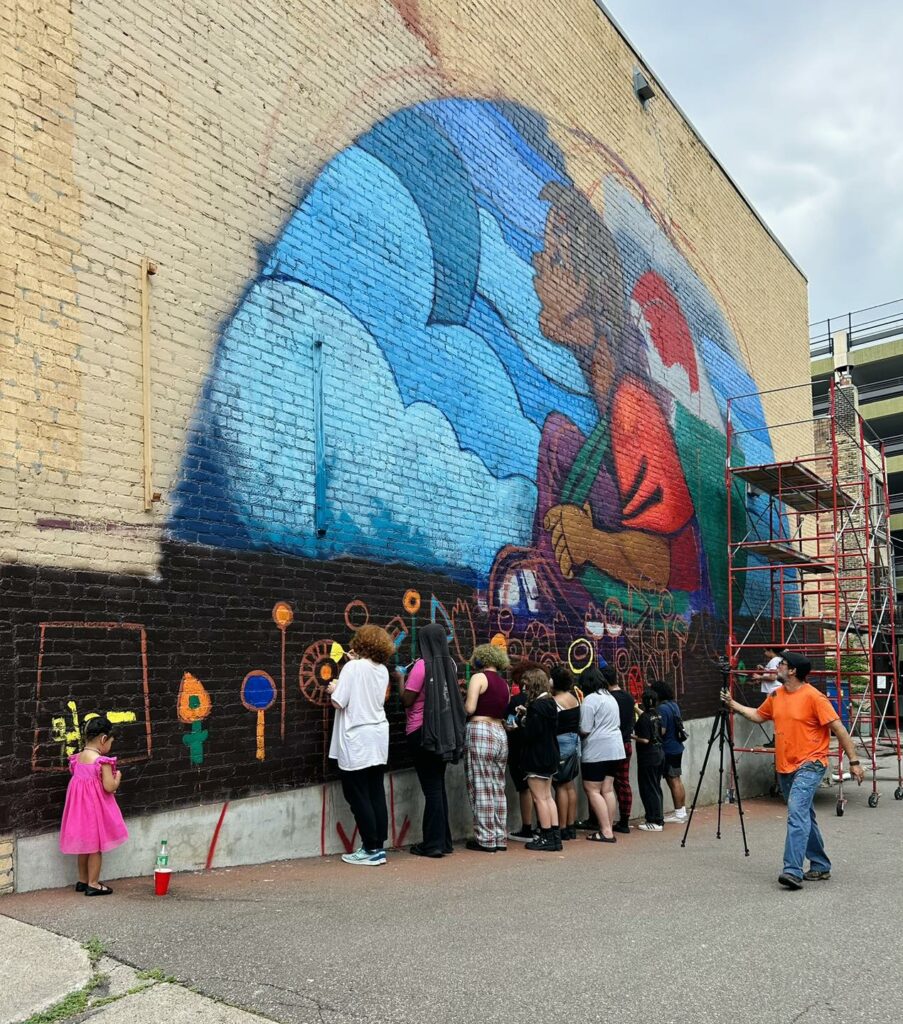
Propel’s Role and What’s Next
Indigenous Roots serves over 10,000 people a year through various programming and events. Propel, who also served as the organization’s fiscal sponsor before they became a 501c3, is proud to have provided Indigenous Roots with a loan to help with repairs to their roof at the arts center.
“Community is built one conversation at a time, and that’s how Indigenous Roots builds community,” Allison Wagstrom, Senior Loan Officer & Financial Specialist at Propel, said.
“A roof is an instrumental part of a building that houses so many beautiful programs. We were grateful to get to partner with them with this loan,” Wagstrom said.
“We are so grateful for what Propel has given,” Mary Anne said. “It is not just about giving us funds, our loan gave us the flexibility [to] create a safe space to [do] the things that are important to us like conducting our ceremonies and rituals, giving us funds so we can create and share space. We can do this without the risk of going in too much debt or having financial catastrophe.”
Indigenous Roots and its founders will continue to grow into what the community needs. Recently, they were awarded a grant from the National Endowment for the Arts and were previously named one of ten Regional Cultural Treasures.
“I am so excited to continue to grow and be of service; to be an elder,” Mary Anne said. “I can’t wait to reach my 60s, 70s, and 80s. In our 20s we had everything stacked against us. We had to learn English, we came from low-income families and lived in neighborhood that had high crime and low income. I saw the East Side as low income, high asset. I knew there was more to it, it just needed the space and time to grow.”
